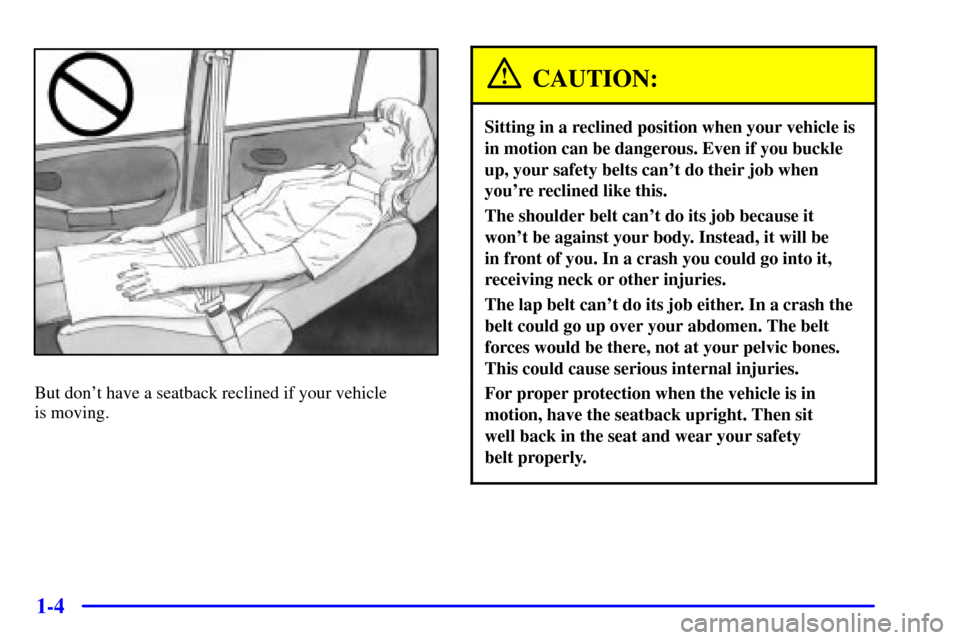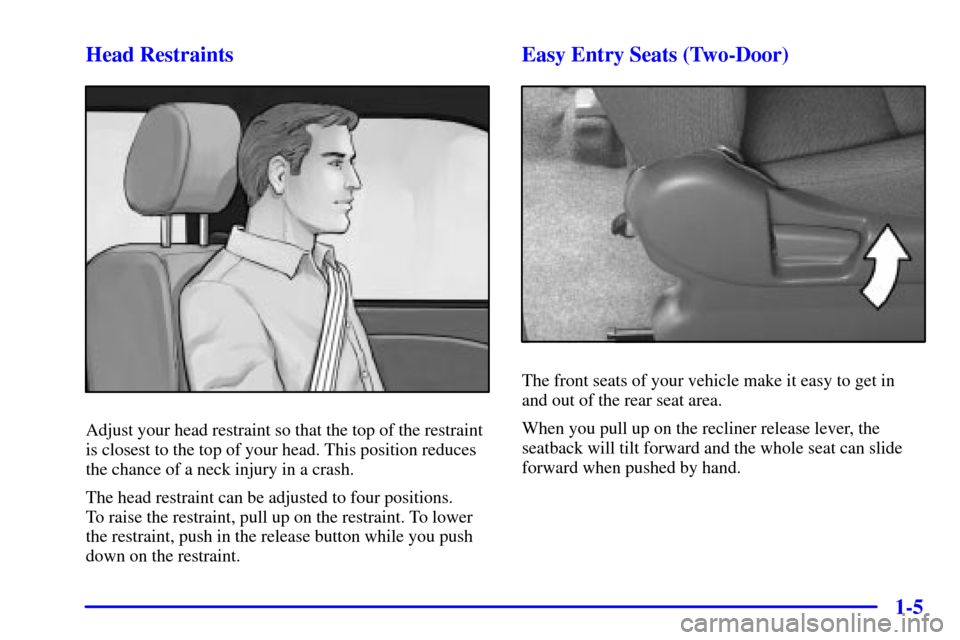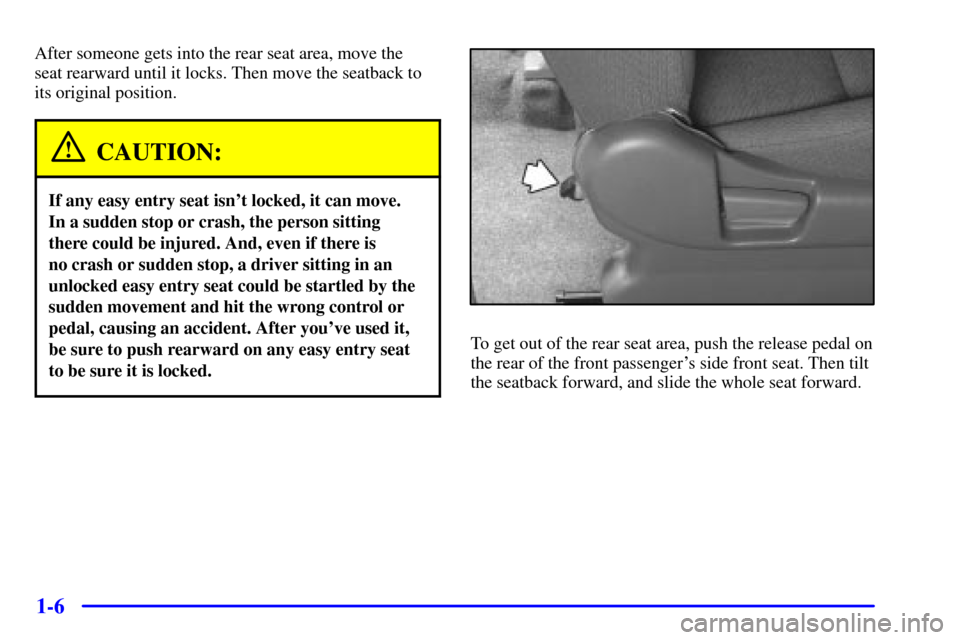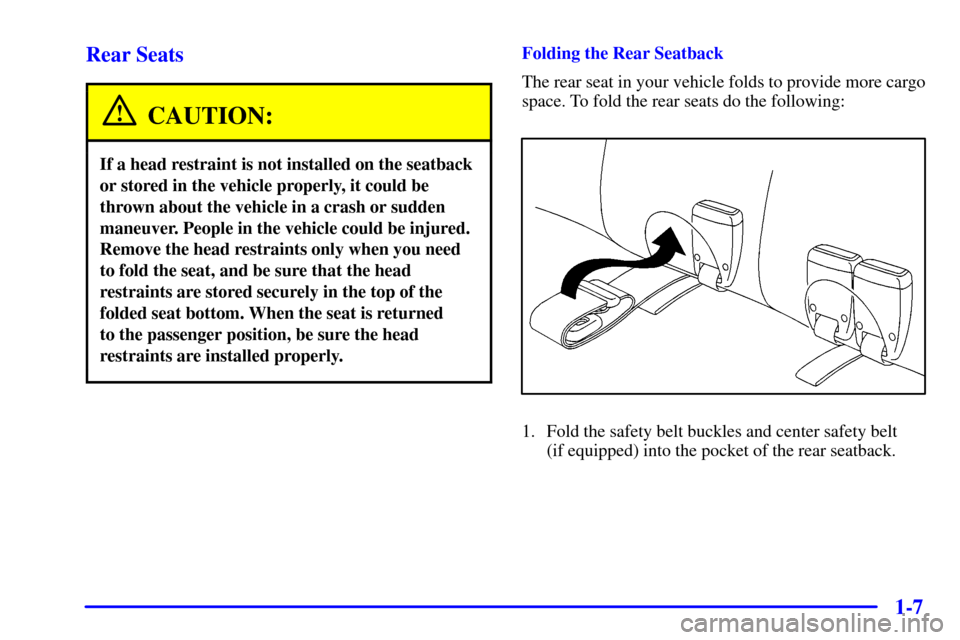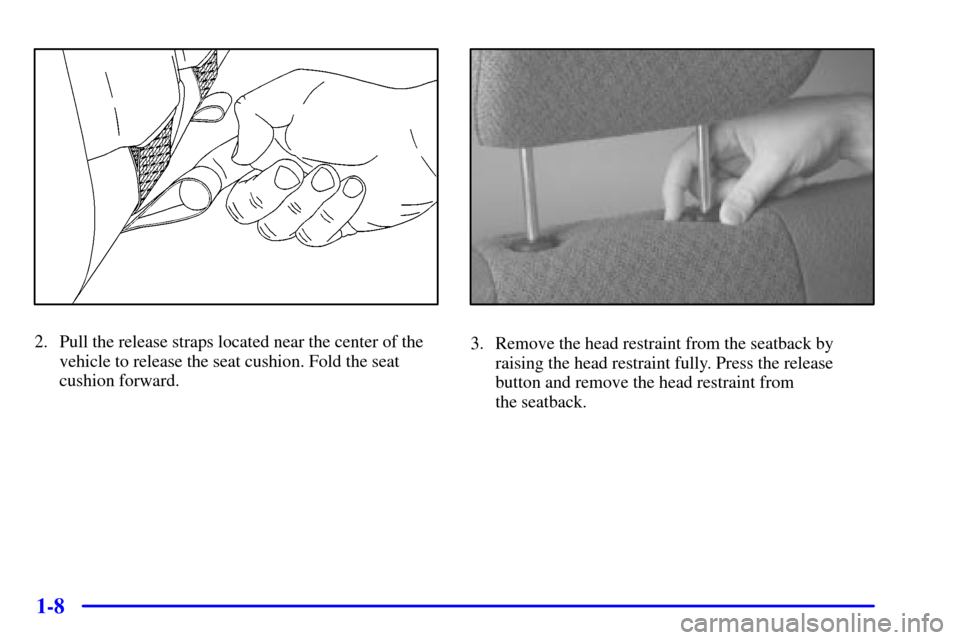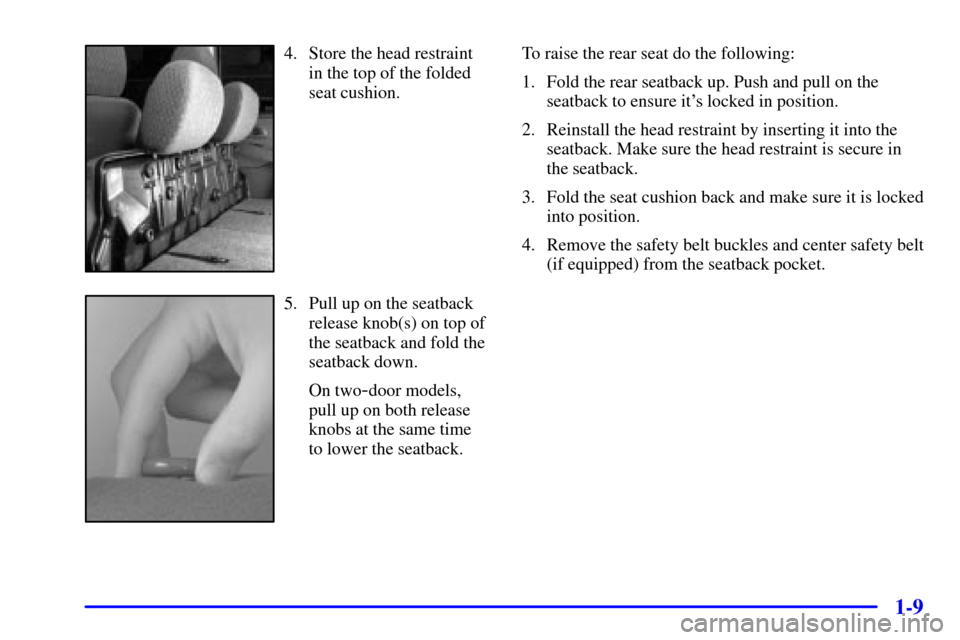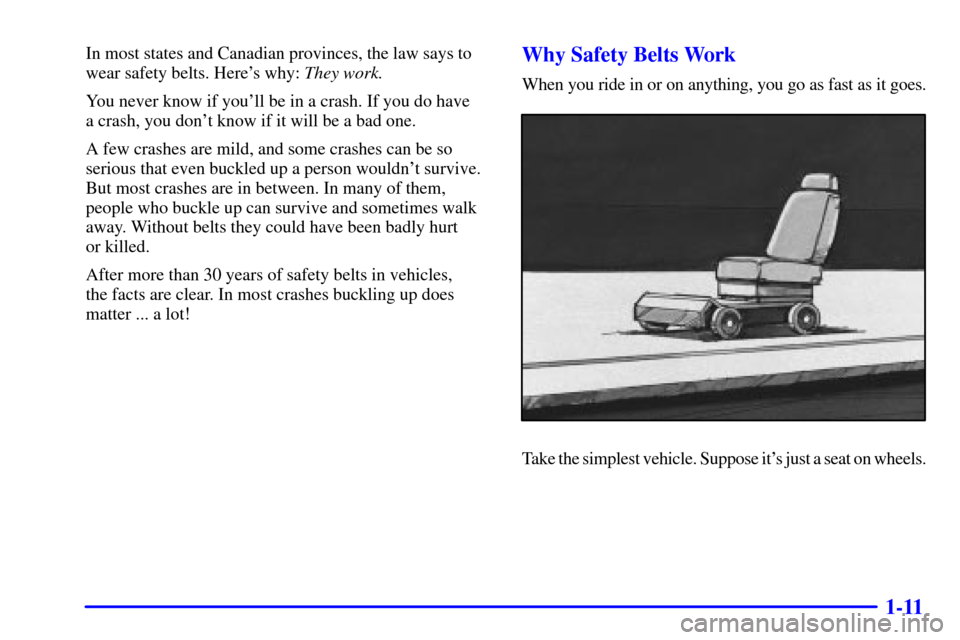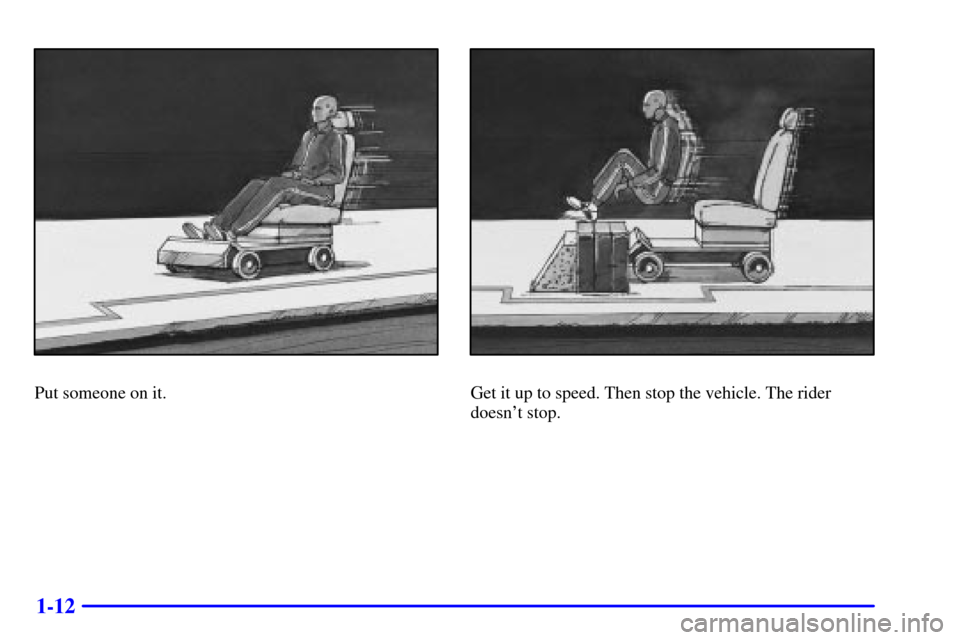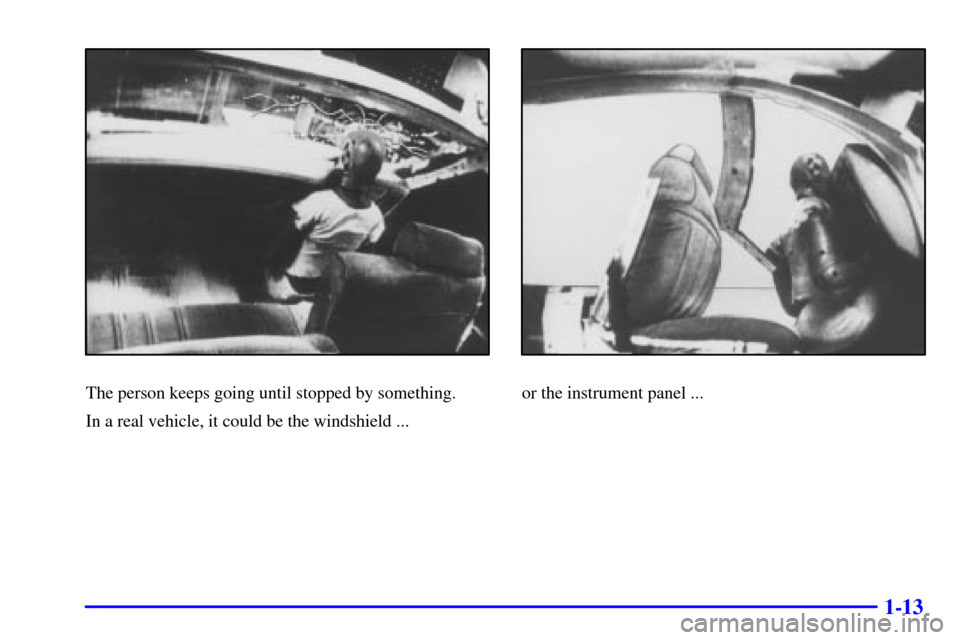CHEVROLET TRACKER 2002 2.G User Guide
TRACKER 2002 2.G
CHEVROLET
CHEVROLET
https://www.carmanualsonline.info/img/24/8345/w960_8345-0.png
CHEVROLET TRACKER 2002 2.G User Guide
Trending: rear view mirror, air conditioning, reset, differential, key, glove box, winter tires
Page 11 of 390
1-4
But don't have a seatback reclined if your vehicle
is moving.
CAUTION:
Sitting in a reclined position when your vehicle is
in motion can be dangerous. Even if you buckle
up, your safety belts can't do their job when
you're reclined like this.
The shoulder belt can't do its job because it
won't be against your body. Instead, it will be
in front of you. In a crash you could go into it,
receiving neck or other injuries.
The lap belt can't do its job either. In a crash the
belt could go up over your abdomen. The belt
forces would be there, not at your pelvic bones.
This could cause serious internal injuries.
For proper protection when the vehicle is in
motion, have the seatback upright. Then sit
well back in the seat and wear your safety
belt properly.
Page 12 of 390
1-5 Head Restraints
Adjust your head restraint so that the top of the restraint
is closest to the top of your head. This position reduces
the chance of a neck injury in a crash.
The head restraint can be adjusted to four positions.
To raise the restraint, pull up on the restraint. To lower
the restraint, push in the release button while you push
down on the restraint.
Easy Entry Seats (Two-Door)
The front seats of your vehicle make it easy to get in
and out of the rear seat area.
When you pull up on the recliner release lever, the
seatback will tilt forward and the whole seat can slide
forward when pushed by hand.
Page 13 of 390
1-6
After someone gets into the rear seat area, move the
seat rearward until it locks. Then move the seatback to
its original position.
CAUTION:
If any easy entry seat isn't locked, it can move.
In a sudden stop or crash, the person sitting
there could be injured. And, even if there is
no crash or sudden stop, a driver sitting in an
unlocked easy entry seat could be startled by the
sudden movement and hit the wrong control or
pedal, causing an accident. After you've used it,
be sure to push rearward on any easy entry seat
to be sure it is locked.
To get out of the rear seat area, push the release pedal on
the rear of the front passenger's side front seat. Then tilt
the seatback forward, and slide the whole seat forward.
Page 14 of 390
1-7 Rear Seats
CAUTION:
If a head restraint is not installed on the seatback
or stored in the vehicle properly, it could be
thrown about the vehicle in a crash or sudden
maneuver. People in the vehicle could be injured.
Remove the head restraints only when you need
to fold the seat, and be sure that the head
restraints are stored securely in the top of the
folded seat bottom. When the seat is returned
to the passenger position, be sure the head
restraints are installed properly.
Folding the Rear Seatback
The rear seat in your vehicle folds to provide more cargo
space. To fold the rear seats do the following:
1. Fold the safety belt buckles and center safety belt
(if equipped) into the pocket of the rear seatback.
Page 15 of 390
1-8
2. Pull the release straps located near the center of the
vehicle to release the seat cushion. Fold the seat
cushion forward.3. Remove the head restraint from the seatback by
raising the head restraint fully. Press the release
button and remove the head restraint from
the seatback.
Page 16 of 390
1-9
4. Store the head restraint
in the top of the folded
seat cushion.
5. Pull up on the seatback
release knob(s) on top of
the seatback and fold the
seatback down.
On two
-door models,
pull up on both release
knobs at the same time
to lower the seatback.To raise the rear seat do the following:
1. Fold the rear seatback up. Push and pull on the
seatback to ensure it's locked in position.
2. Reinstall the head restraint by inserting it into the
seatback. Make sure the head restraint is secure in
the seatback.
3. Fold the seat cushion back and make sure it is locked
into position.
4. Remove the safety belt buckles and center safety belt
(if equipped) from the seatback pocket.
Page 17 of 390
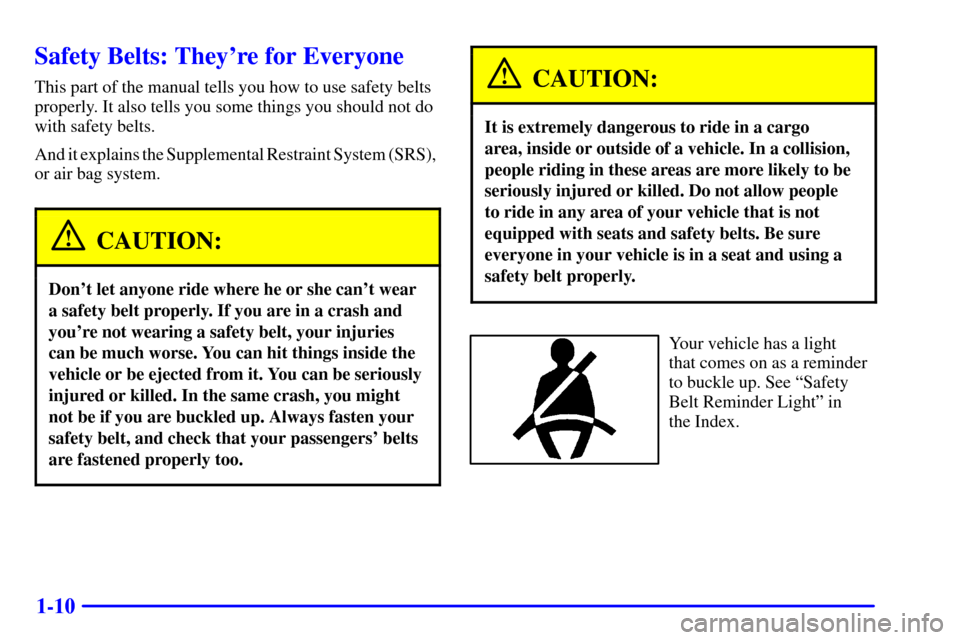
1-10
Safety Belts: They're for Everyone
This part of the manual tells you how to use safety belts
properly. It also tells you some things you should not do
with safety belts.
And it explains the Supplemental Restraint System (SRS),
or air bag system.
CAUTION:
Don't let anyone ride where he or she can't wear
a safety belt properly. If you are in a crash and
you're not wearing a safety belt, your injuries
can be much worse. You can hit things inside the
vehicle or be ejected from it. You can be seriously
injured or killed. In the same crash, you might
not be if you are buckled up. Always fasten your
safety belt, and check that your passengers' belts
are fastened properly too.
CAUTION:
It is extremely dangerous to ride in a cargo
area, inside or outside of a vehicle. In a collision,
people riding in these areas are more likely to be
seriously injured or killed. Do not allow people
to ride in any area of your vehicle that is not
equipped with seats and safety belts. Be sure
everyone in your vehicle is in a seat and using a
safety belt properly.
Your vehicle has a light
that comes on as a reminder
to buckle up. See ªSafety
Belt Reminder Lightº in
the Index.
Page 18 of 390
1-11
In most states and Canadian provinces, the law says to
wear safety belts. Here's why: They work.
You never know if you'll be in a crash. If you do have
a crash, you don't know if it will be a bad one.
A few crashes are mild, and some crashes can be so
serious that even buckled up a person wouldn't survive.
But most crashes are in between. In many of them,
people who buckle up can survive and sometimes walk
away. Without belts they could have been badly hurt
or killed.
After more than 30 years of safety belts in vehicles,
the facts are clear. In most crashes buckling up does
matter ... a lot!Why Safety Belts Work
When you ride in or on anything, you go as fast as it goes.
Take the simplest vehicle. Suppose it's just a seat on wheels.
Page 19 of 390
1-12
Put someone on it.Get it up to speed. Then stop the vehicle. The rider
doesn't stop.
Page 20 of 390
1-13
The person keeps going until stopped by something.
In a real vehicle, it could be the windshield ...or the instrument panel ...
Trending: wiring, checking oil, buttons, window, check oil, reset, turn signal
